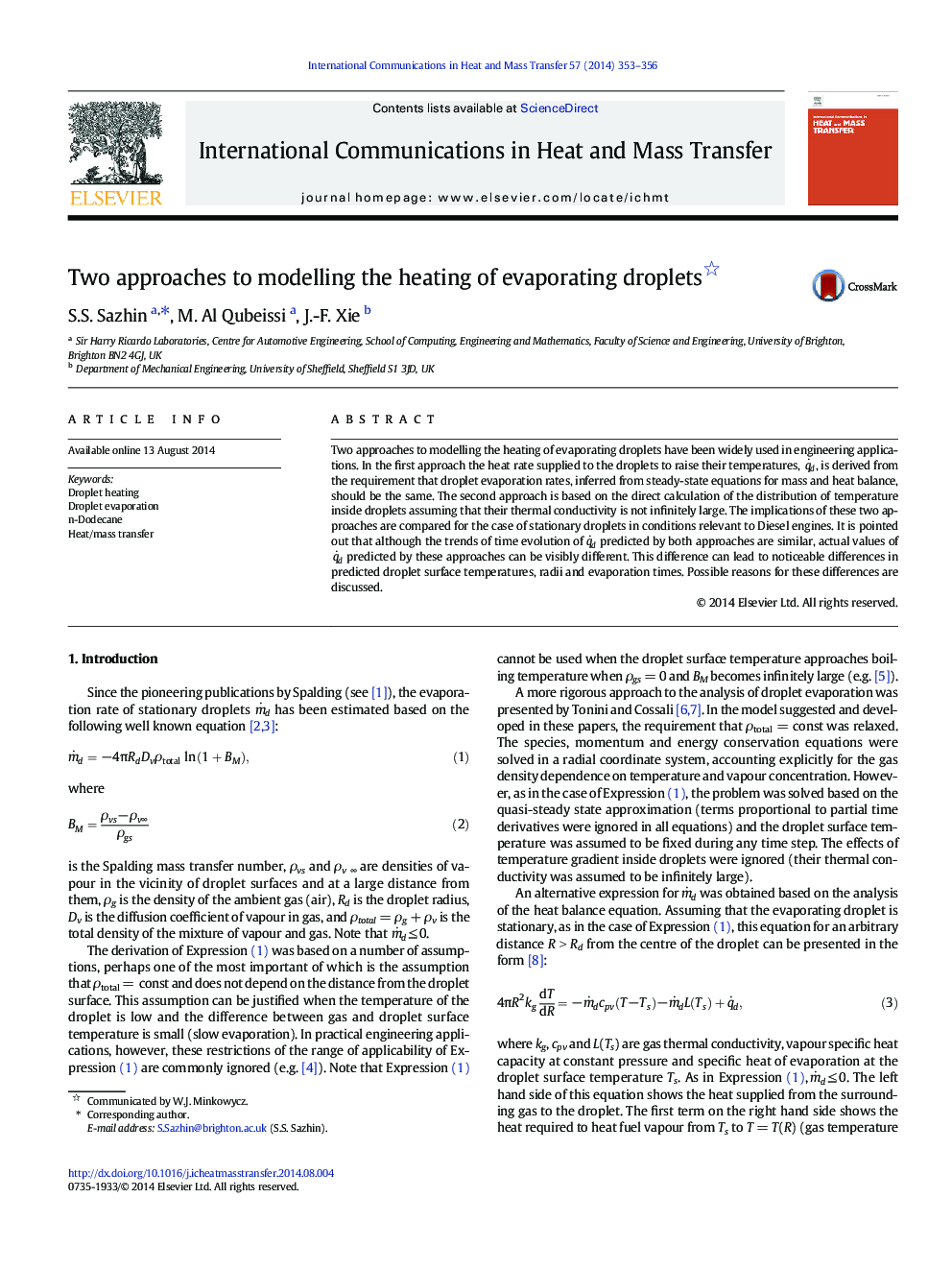| کد مقاله | کد نشریه | سال انتشار | مقاله انگلیسی | نسخه تمام متن |
|---|---|---|---|---|
| 653195 | 1457497 | 2014 | 4 صفحه PDF | دانلود رایگان |
Two approaches to modelling the heating of evaporating droplets have been widely used in engineering applications. In the first approach the heat rate supplied to the droplets to raise their temperatures, q˙d, is derived from the requirement that droplet evaporation rates, inferred from steady-state equations for mass and heat balance, should be the same. The second approach is based on the direct calculation of the distribution of temperature inside droplets assuming that their thermal conductivity is not infinitely large. The implications of these two approaches are compared for the case of stationary droplets in conditions relevant to Diesel engines. It is pointed out that although the trends of time evolution of q˙d predicted by both approaches are similar, actual values of q˙d predicted by these approaches can be visibly different. This difference can lead to noticeable differences in predicted droplet surface temperatures, radii and evaporation times. Possible reasons for these differences are discussed.
Journal: International Communications in Heat and Mass Transfer - Volume 57, October 2014, Pages 353–356
